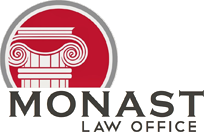
A robotic arm stops mid-cycle, crushing a person’s hand against a conveyor belt. A forklift programmed with artificial intelligence (AI) malfunctions, trapping a worker against a warehouse wall. While these scenarios sound like something out of a science fiction novel, they represent the new reality of unprecedented workplace safety issues in Ohio's increasingly automated economy.
Traditional workers' compensation laws must now address injuries caused by malfunctioning AI systems and failures of robotic equipment. At Monast Law Office, we combine years of proven workers' comp experience with forward-thinking legal strategies to assist you with the unusual factors involving artificial intelligence work injuries. Let’s take a closer look.
Understanding Automation-Related Workplace Injuries
Even the most sophisticated AI systems can fail in unpredictable ways, causing serious harm to workers who rely on their proper functioning. Common causes of AI-related injuries include:
- Programming errors. Even well-designed systems can cause accidents if software contains bugs or hasn't been adequately tested to recognize all potential hazards. Algorithms that rely on what’s known as reinforced or unsupervised learning often develop unexpected patterns over time, which can put workers at risk. For example, a warehouse robot optimized to minimize travel time might choose shortcuts that violate safety protocols or ignore human presence.
- Maintenance issues. AI systems require regular updates, calibration, and inspection to function safely. When “non-expert users” or employers fail to meet these requirements, equipment can drift out of safe operating parameters, thereby increasing the likelihood of employee injuries.
- Sensor failures. Faulty sensors can provide incorrect information to AI systems, leading them to make hazardous decisions that put nearby workers at risk.
The severity of AI injuries often exceeds that of traditional workplace accidents. For example, robotic systems typically operate with greater force and speed than human workers, meaning accidents can cause crushing injuries, severe cuts, burns, or other trauma requiring extensive medical treatment.
In What Industries Does AI Technology Create New Risks?
Several of our state’s top employers face increased workplace injury risks due to AI and robotic systems:
- Manufacturing facilities. AI-powered robotics for assembly, welding, painting, and material handling operations often result in serious injuries when they malfunction or when workers inadvertently enter their operating zones.
- Warehouse and distribution centers use automated guided vehicles, robotic picking systems, and AI-controlled conveyor belts, which can cause injuries if they fail to detect workers or if their programming doesn't account for human behavior patterns. Consider this: many Amazon warehouse employees monitored and directed by real-time AI systems have reported stress, increased back and repetitive stress injuries, and unrealistic performance expectations.
- Health care facilities. Robotic surgical systems, automated medication dispensers, and AI-powered patient monitoring equipment present serious medical complications if they malfunction or if employees don’t receive adequate training.
- Construction sites. When systems fail on autonomous construction vehicles, robotic concrete pumps, and AI-controlled cranes, the result is often catastrophic.
How Monast Law Office Helps With Artificial Intelligence Workers' Compensation Claims
If you've been injured by malfunctioning AI systems or robotic equipment in your Ohio workplace, don't let the technical complexity of a case like this intimidate you into accepting less than you deserve.
Contact Monast Law Office today to discuss your workers' compensation claim with a skilled legal team that understands both the legal framework and the technological challenges these cases present. We partner with experts who analyze AI systems, review software logs, and investigate what caused the malfunction that led to your injury. We also help our clients gather the necessary documentation to support their claims, including maintenance records, training materials, safety protocols, third-party development, and incident reports.
When artificial intelligence or robotic equipment fails and causes your workplace injury, you're not just facing medical bills and lost wages — you're confronting a legal challenge that requires both technical knowledge and aggressive advocacy. Don't trust your future to attorneys who treat AI-related injuries as just another claim. As a board-certified Ohio workers' compensation lawyer with over 35 years of experience, I’m committed to understanding these emerging technologies and building the expert networks necessary to prove your case.
More importantly, as our clients state, our entire team works tirelessly to secure the comprehensive benefits you need to recover fully and move forward with confidence.

